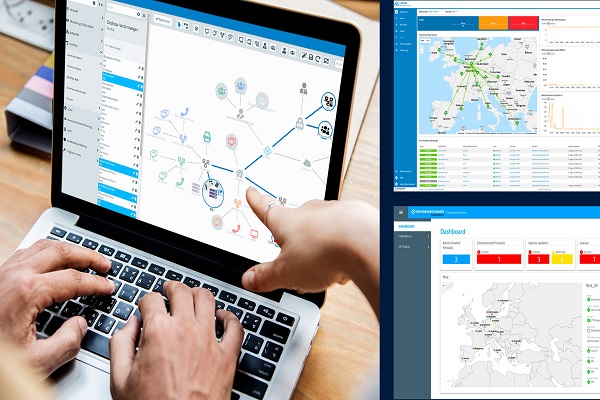Organizations in the modern day are more connected than ever. Any functional corporation or firm must have private networks, systems, and equipment. To keep these networks safe and secure from malicious attacks, firewalls are a crucial line of protection.
Firewalls are a foundational part of an organization's cybersecurity defenses, whether they come in the form of conventional firewalls or "next-generation" technologies. To maintain a secure network and reduce the risks from cyber threats, firewall administration is essential. You can also purchase firewall management via IPAM,which works similarly.
What is firewall management?
To maintain a secure network, a specific firewall isparticularly configured and monitored through the process of firewall management. Firewalls play a crucial role in both residential and commercial network security.
A company may use a variety of firewalls to protect its network and devices by default. Setting rules and standards, keeping track of changes, and keeping an eye on compliance logs are all part of managing these firewalls. Monitoring user access to firewall settings is another aspect of it. The setting guarantees the firewall's efficient and secure operation.
A firewall will be used by any size firm with a private network to safeguard its systems. This could be a small office network or a big contractor that must obtain Cybersecurity Maturity Model Certification (CMMC). Since firewalls are crucial to cybersecurity, they play a significant role in IT security regulations. Those in charge of theparticular organization's IT security or compliance initiatives are ultimately responsible for firewall management.
Three main types of firewalls
1. Proxy firewalls
By serving as a sort of "go-between," a proxy firewall blocks direct connections between a device and a network. The proxy will establish the necessary connections to the network destination after receiving a connection from a device. One of the safest kinds of firewalls forbids direct connections.
This kind of firewall can run in the cloud or on a proxy device. As a result of its role as a request bottleneck, a proxy server caches frequently requested content and maintains logs.
2. Traditional firewalls
Traditional firewalls are frequently referred to as both stateful and stateless inspection firewalls. These firewalls regulate and filter network traffic according to predefined criteria like source, destination, or port address. Only trusted traffic will be permitted to enter and exit a network, thanks to these firewalls.
On some traffic flows, rules can be made and put into effect; additionally, traffic coming from unreliable sources can be blocked. These firewalls are frequently found in pre-built products and solutions.
3. Next-generation firewalls
Next-generation firewalls (NGFW) are more sophisticated iterations of conventional firewalls, as their name suggests. The additional feature of traffic filtering based on applications is a feature of several next-generation firewalls. This aids in protecting enterprises from more sophisticated attackers. They can function as an anti-virus, preventing particular malware from gaining access to networks. The intrusion detection system, which actively scans the network for harmful activities, is combined with conventional firewalls in these systems.
As new cybersecurity threats emerge, next-generation firewalls may also be updated to address them, assisting in the detection and reduction of new hazards. Because of this, when implemented, next-generation firewalls provide enterprises with high levels of protection.
Tips For Firewall Management:
If you're looking for tips on firewall management, you've come to the right place. This expert guide will cover everything you need to know about managing your firewall, from the basics of setting up and configuring your firewall to more advanced topics like troubleshooting and security.
1. Decide What You Need a Firewall For
Before you can choose the right firewall for your needs, you first have to decide what sort of security you need. A simple firewall like the Windows Defender will do the job if you only need to protect your system from unauthorized access. If you also want to protect your system from spyware and other malicious software, you'll want to invest in a more comprehensive firewall.
2. Consider Your System's Needs
Each type of firewall requires different settings in order to work properly. For example, a simple Windows Defender firewall requires that you allow only specific types of traffic through it. If your system runs more complicated software or apps, you'll likely need a more comprehensive firewall that can block more types of traffic.
3. Consider the Hardware You Have
Before you can configure your firewall, you first have to decide which hardware is available to you. Some firewalls require that you have a certain type of computer hardware in order to function properly, such as a dedicated firewall for IPv4 and IPv6. If you don't have this type of hardware, then you'll need to purchase it separately.
4. Take into Account Your System's Location
Firewalls can vary depending on your system's location. For example, a U.S.-based firewall like Windows Defender might be the best option for you if you're located in the United States. If, however, you're located in Europe or Asia, then a European or Asian-based firewall might be more appropriate.
Final Thoughts:
The most important thing to particularly remember when it comes to firewall management is that prevention is always better than cure. By keeping your firewall up-to-date and regularly checking your system for vulnerabilities, you can help to keep your network safe from attack.

No comments:
Post a Comment